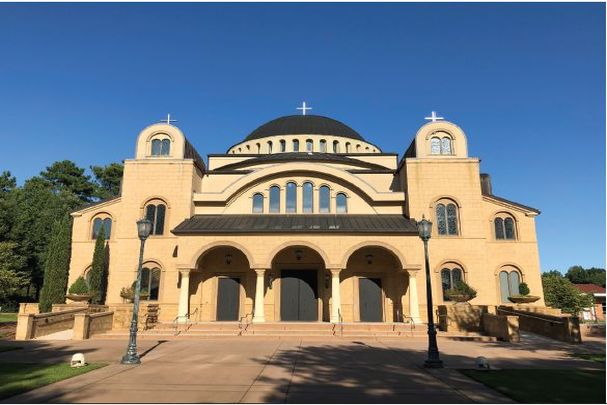This article first appeared in the From the President column of the Christian Research Journal, volume 44, number 3 (2021). For further information or to subscribe to the Christian Research Journal please click here.
In our latest edition of the Christian Research Journal — the one you hold in your hand — there is a significant focus on the church. And this is precisely how it should be. The church, as St. Paul makes plain, is “the pillar and ground of the truth” (1 Tim. 3:15).1 Thus, to have a proper perspective on church has ramifications for your present life, as well as for life to come. As St. Cyprian wisely proffered, “No one can have God for his Father who does not have the Church for his mother.”2 This ought to be a self-evident truth. For it is through the church that God’s saving power is mediated to the whole of humanity. Christianity knows nothing of lone ranger Christians. To be baptized is to be born anew into a body of which Christ is the head.
Church is thus central to our lives. It is the reincarnation of Eden. The place where you and I may access the Tree of Life replete with its eucharistic bounty. A bounty by which we are changed from human multiplicity to one body in our Lord and Savior Jesus Christ.
The church, during its first millennium, effectively functioned as a sisterhood of five patriarchates. Antioch, where the disciples were first called Christians; Alexandria, the patriarchate founded by the Gospel writer Mark; Jerusalem, home to the first ecumenical council; Constantinople, capital of the Christian Greek Roman Empire; and Rome, the patriarchate designated by the others with a primacy of honor — but not supremacy.
As Robert Spencer notes in our cover article, “None of the Fathers denied that St. Peter was given primacy in the church” (p. 10) — yet the church must never operate in supreme and autonomous fashion. Nor should the pope ever be deemed infallible. For, as history bears out, popes speaking unilaterally on matters of faith and practice have made horrendous errors. Moreover, the Roman Church, operating as “an imperious mistress” rather than “a pious mother,” ultimately led to the sin of fratricide — a sin against the common mind of the church. And a sin that led inexorably toward the first great divide within the historic Christian church.
The unilateral addition of the Filioque3 to the Niceno-Constantinopolitan Creed struck a mortal blow to the unity and fractured relations between the Western papacy and the Eastern patriarchates. Consequently, on a summer afternoon in the year 1054, a schismatic volcano erupted, leaving a blackened lava trail stretching from East to West.
Half a millennium after the scandal of fratricide had fissured the church from East to West, another schism shattered the Western church. This time the fissure separated Rome from the Reformers. “Reformers, inspired directly by Luther, began taking his doctrinal principles — sola scriptura, the priesthood of all believers, and justification by faith alone — to places Luther himself thought were heretical.”4
The doctrinal fissures that erupted were deep and devastating. The year following Luther’s publication of the 95 Theses, Andreas Rudolph Bodenstein von Karlstadt, who as chancellor of the University of Wittenberg had conferred on Luther a doctorate in theology, and who Luther considered to be his academic superior, published a list of 151 theses.5 As noted by Benjamin Wiker in The Reformation 500 Years Later, Luther’s dictum of justification by faith alone became the basis by which Karlstadt and his followers “rejected all the sacraments — and claimed that there was no support in Scripture for infant baptism, and perhaps not even for adult baptism. Furthermore, some of their followers rejected the doctrine of original sin, the notion that marriage was permanent (it was not, after all, a sacrament), and argued in favor of polygamy (such as existed in the Old Testament).”6
And this was but the beginning of sorrows. As the Reformation continued, so did the fissuring. Loosed from the restraining fetters of the apostolic tradition, the creeds, and the councils, fissuring has become an on-going reality within the body of Christ.7 Rodney Stark, Distinguished Professor of the Social Sciences and co-director of the Institute for Studies of Religion at Baylor University, notes that “even in Luther’s time, the word Protestant lacked any coherent theological or organizational meaning.” As such, from the Reformation onward, the fissuring of the body of Christ has become ever more acute. “Perhaps as many as 11,000 Protestant denominations are in sub-Saharan Africa alone. Great Britain has more than 500 independent Protestant denominations, ranging from the huge Church of England to small evangelical groups. And there are more than a thousand independent Protestant denominations in the United States, 23 of them having more than a million members each.”8
Such fissuring within the church stands in direct opposition to the high priestly prayer of Christ to the Father: “I do not pray for these alone, but also for those who will believe in Me through their word; that they all may be one, as You, Father, are in Me, and I in You; that they also may be one in Us, that the world may believe that You sent Me” (John 17:20–21). Union with God and unity within the church is thus the goal of our salvation and the means of world evangelization.
God became incarnate so that humanity might rise up to union with God. United to God and to one another, the church is empowered by an unlimited flow of divine energy by which to provide life and light to the world. Divided, the church’s energy remains limited and toxic. And therein lies the mother of all questions: Will the church continue to fissure and fragment, or will we work toward fusion in answer to our Lord’s high priestly prayer?
Our response to fusion within the body of Christ may well be one of denial. How realistic is it to believe that the church would move toward unification? But we must immediately catch ourselves. Jesus, in His high priestly prayer, is not inviting us to comprehend the infinite or grasp the eternal, He is simply asking us to obey. Were the church to do so, she may well experience a second iteration of Pentecost. The sound from heaven. The mighty rushing wind. The baptism of the Holy Spirit and fire. The manifestation of the uncreated, inexhaustible energy supply that alone is sufficient to save the world.
As you continue reading through our flagship magazine, I urge you to pay close attention to articles focused on the health of the church. To Rev. Matthew Kennedy’s insightful piece, “Christ and His Bride: Why Your Pastor’s Gender Matters.” And to Anne Kennedy’s exposé on America’s chief export to the church in Africa, namely, the prosperity gospel.
Moreover, as noted in my Ask Hank column, “What’s the Difference Between Eastern Orthodoxy and Roman Catholicism?,” never — not even in interest of unity — should the historic church accept gratuitous innovations contrary to the creeds and confessions of the faith. Not least of which is the late sixteenth-century innovation of purgatory — an innovation that drawn to its logical conclusion undermines the sufficiency of Christ’s atonement on the cross. Nor can the church rightly embrace papal infallibility, a late Roman Catholic innovation defined during the first Vatican council in 1870. Far better, as Spencer poignantly points out, to listen to the collective wisdom of the church, which settled great doctrinal issues in ecumenical councils that the historic church has rightly regarded as infallible.
Beyond the paramount matter of the church, the Journal is, as always, chalk full of articles and insights to equip you in matters of Truth and Life. My prayer is that they will edify, equip, and educate you to always be ready to give an answer, a reason for the hope that lies within you, with gentleness and respect (1 Pet. 3:15).—Hank Hanegraaff
NOTES
- Scripture quotations are from NKJV.
- Cyprian, On the Unity of the Church, 6.
- Latin for “and the Son.”
- Benjamin Wiker, The Reformation 500 Years Later: 12 Things You Need to Know (Washington, DC: Regnery History, 2017), 138.
- See Ronald J. Sider, Andreas Bodenstein Von Karlstadt: The Development of His Thought, 1517–1525 (Leiden: E. J. Brill, 1974), 9–11.
- Wiker, Reformation 500 Years Later, 138.
- Some portions of this article are adapted from Hank Hanegraaff, Truth Matters, Life Matters More: The Unexpected Beauty of an Authentic Christian Life (Nashville: W Publishing Group, 2019).
- Rodney Stark, Reformation Myths: Five Centuries of Misconceptions and (Some) Misfortunes (London: SPCK, 2017), 3.









